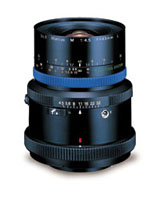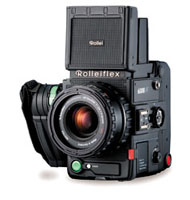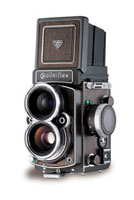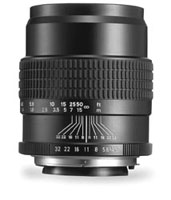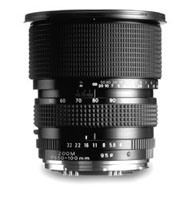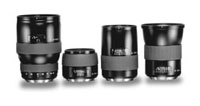Medium Format Update
When Worlds Collide
It used to be, and may still
be the dream of many 35mm shooters to try their hand at medium format.
The larger film size is certainly an advantage when going for big prints,
and the clarity and fine detail it reveals makes 35mm look like the
subminiature format it once was called. Indeed, there has been a real
movement upward for some time, which might be a quality as well as maturity
issue. Perhaps as photographers get older their format gets larger.
But I've also seen a real "downward" trend, with quite
a few old hands going from large to medium format shooting. One vet
we know, Bill Davis from Taos, New Mexico, was a tried and true 4x5
shooter. One day he got his hands on a Contax 645 and never looked back.
The Digital Intrusion A Winning Combo Lenses |
||
Wide Angle Rolleiflex
|
||
The new SCA 3562 flash adapter,
developed in cooperation with Metz, controls a system flash unit such
as the Metz 54 MZ 3. One of the more interesting features is how it
performs in low-light conditions. The optical system of the LED integrated
in the system flash unit projects a striped pattern onto the subject
being metered. This enables the camera's AF module to measure
the distance. Another new feature is that the system flash, if desired,
switches on automatically in low light. In addition, pre-flash metering
without prior mirror pre-lock can be used to check the flash output
or adjust the aperture when using studio flash units. Contax Carl Zeiss Glass |
||
Tamron also introduced some new glass for their Bronica SQ and RF645 Range-finder cameras. The 645 intro is a Zen-zanon RF100mm f/4.5 lens is smaller than previous manifestations due to the "variation Gauss Type" design that's based on a symmetrical optical configuration. This is said to shorten the length and proportioning power to the front and back groups of the lens. The lens has a close focusing distance of about 6 feet and takes a 62mm filter size. The new lens for the 6x6cm Bronica SQ is a zoom, the first made for this camera. The PS50-100mm f/4-5.6 lens offers a field of view equivalent to 27.5-55mm on a 35mm format camera. Bronica says that this may well become the standard lens for the SQ due to its compact size and focal length range. The lens contains two large hybrid aspherical lenses in its construction of 12 elements and 10 groups. The minimum focusing distance is a bit less than five feet at all focal length ranges, with filter size being a large 95mm. |
||
It's "H"
For The New Hasselblad System |
